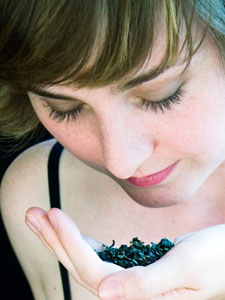Tea Blogging: A History





Over the past two years there has been a huge upswing in the number of tea-related blogs. In response, a vibrant online community has evolved due the common passion of tea. One has to wonder how we got here and what the future holds for tea blogging. I've spent the last few weeks trying to answer those questions, and here is what I discovered.
The Dawn of the Tea Blog, or Was It?
In the early years of the Internet, online diaries (called Weblogs) were essentially Web pages requiring their creators to have some knowledge of HTML code. By the late 1990s, however, when the term "blog" became popular, a handful of companies started to offer free blogging software. These services allowed anyone with an idea, some writing aptitude, and access to a computer the ability to easily build their own blog. Whether a tea devotee of that time chose to utilize any of these tools remains a bit of a mystery, for over the years any cyberspace relics left from these pioneering tea blogs have become lost within a sea of virtual information.
Tea Blogging: Tea Companies Start Riding the Blogging-Craze Wave
Between 2000 and 2005, blogging gained popularity, but by 2004 it had become part of mainstream culture. Companies in general started adding blogs to their Web sites. Some tea vendors, wanting to catch the blogging-craze wave, also began adding blogs to their sites. Anne Downen, currently of SororiTeaSisters, recalls reading many of these tea-business blogs.
It is unclear how many tea lovers started blogging during this era. One thing is clear, however: only a handful of these blogs remain, such as Tea Guy Speaks, which was started in July 2005 by William I. Lengeman, III.
Tea Blogging: The Personal Tea Blog Revolution
For varying reasons, there was a huge upswing in the number of tea blogs started by individuals between 2006 and 2010. One of the most prevalent motives for establishing a tea blog was to simply document one's tea drinking experiences, as Brittiny Lawson of My Steeped IdentiTEA eloquently stated, adding, "I wanted to be able to look back and see how my knowledge, opinions, and tastes about tea changed over time."
Others began blogging because they wanted to follow their passion, like Melissa Wrzesniewsky of Expanding Leaves. Some just wanted to connect, like Alex Zorach of Rate Tea, who created his personal tea blog because he was inspired by other tea bloggers and, "wanted to have a blog in order to participate in the conversation and blogging community." A majority of tea bloggers have a special affinity for loose-leaf tea, but Jackie and Peter Davenport, both of Leafbox Tea, started blogging specifically to promote it. Then there are those with unique stories, like Cinnabar, who started off just helping a friend with her tea blog. When her friend developed a sensitivity to caffeine and stopped writing about tea, Cinnabar became primary writer for Gongfu Girl.
Trend: Getting Started With Micro-Blogging
Nowadays, tea enthusiasts can get online and start blogging instantaneously by using a variety of micro-blogging services. One of those services is Steepster. Launched in 2009, it provided a community for users to chronicle and share their tea-drinking experiences via a "tealog." Some tea aficionados have even used Steepster as a jumping off point for creating their own blog, while others begun their blogging journey with more general micro-blogging platforms. For instance, Lainie Petersen began by using Twitter and Facebook to post her tea-drinking experiences before starting Lainie Sips. Deb Huff used Tumblr to share tea photography before deciding to start her blog Tea & Travel.
Trend: Social Media & Making Connections
Social media has made it incredibly easy for tea bloggers to connect with each other. As Jordan Williams of Tyros of Tea points out, "Twitter has become a good way of meeting other tea bloggers and connecting with them." Many tea bloggers utilize social media tools, like A.C. Cargill of Tea Time, who shares that it has become a very important part of her blogging because it allows her exposure to a wider audience. Social media has also made it easy for tea bloggers to connect with anyone interested in the world of tea, from casual tea drinkers to tea industry professionals. Tea bloggers can also make connections and share information through the Association of Tea Bloggers (ATB), founded by seven members in 2009.
Trend: Finding a Niche
At one time, there were very few competing tea blogs. Jessica Pezak, who started her blog AuthoriTea in 2007 recalls, "I wasn't aware of many other blogs when I started mine...now they are everywhere." Nowadays, tea blogs need to differentiate themselves to capture and keep an engaged audience. Many tea bloggers have met this challenge by finding something unique that sets them apart. For example, Jason Walker does only tea reviews and tastings via video at Walker Tea Review, Jen Piccotti of An International Tea Moment focuses on sharing special tea moments, and Jackie Gamber pairs her passion for novels and tea at Booktastings. Lindsey Goodwin, who has worked in the tea industry for six years, has noticed an interesting trend: some blogs have begun to concentrate on a specific area of tea such as type of tea, style of brewing, or tea culture. As the numbers of tea bloggers continue to grow, it will be interesting to see what specialties emerge and which simply vanish.
The Future of Tea Blogging
If history is any indication, the number of tea blogs will continue to increase, bloggers will become even more interconnected, and new technologies will provide even greater opportunities. As the attraction to tea drinking increases in the U.S., one can only assume that the demand for high-quality tea information will grow along with it. As Nicole Martin of Tea for Me Please projects, "I think tea bloggers will have the ability to shape the tea industry because we can have an impact on the way people buy tea."
The future seems very bright, indeed!
